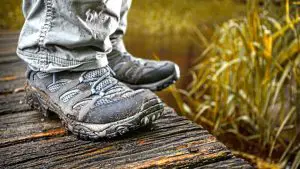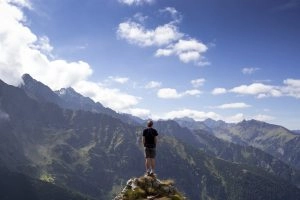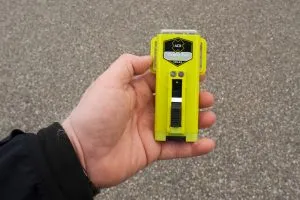10 Mistakes Beginner Hikers Make (And How To Avoid Them)
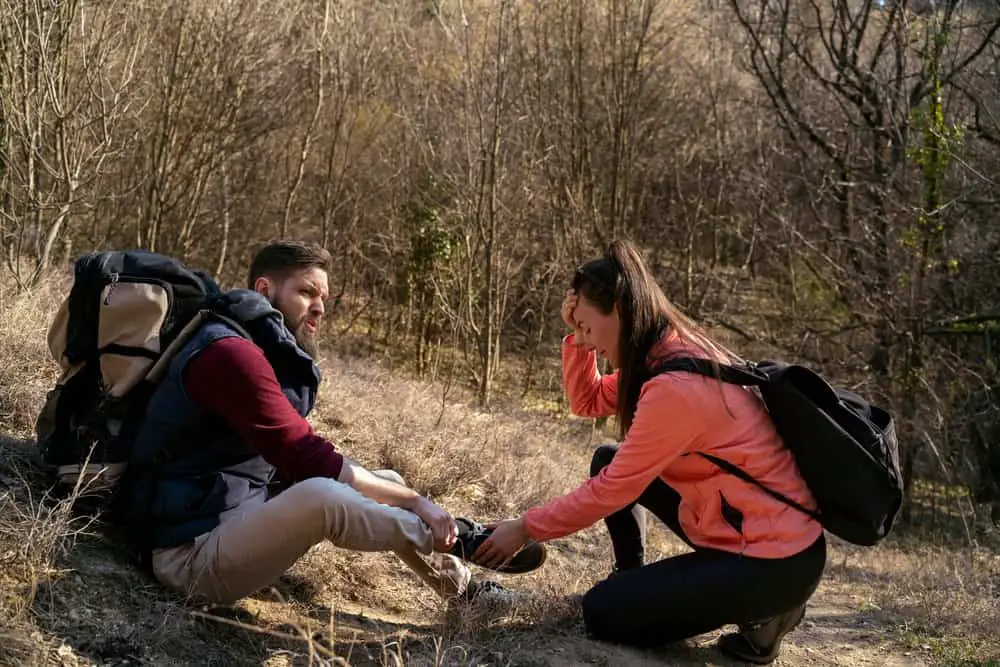
There are many reasons why somebody might want to go hiking. Maybe you’re trying to get in shape and lose a few pounds. Maybe you’re looking for an excuse to get outside and explore nature. Maybe you just need some time to clear your head. Or, maybe your just looking to try something new. Whatever your reasons, hiking is a great activity that can be enjoyed by people of all ages and levels of fitness.
Unfortunately, even the most experienced hikers can make mistakes. And sometimes those mistakes can be dangerous. If you’re new to hiking, those mistakes can be magnified. So to help you out, this post will essentially retell my early days as a hiker with some tips on avoiding making the same mistakes I made.
Quick Links
Ten Mistakes Beginner Hikers Make
1. Choosing a Trail That’s Too Difficult
As a beginner, you’ll want to start with easier trails. But here’s the tricky part. If you look up trails online that are marked as “Easy” or “Beginner Friendly,” you’ll assume they are a cakewalk. But that’s not always the case. Just because a trail is rated as easy, doesn’t mean it will be easy for you. Trust me on this.
There are MANY factors to consider such as the length of the trail, the elevation gain, and the terrain. If you aren’t used to walking steep inclines, then a trail with a lot of elevation gain might be difficult for you. If you’re used to walking on pavement, then a trail with loose rocks might be difficult for you. The best way to find an easy trail is to look for short trails (<2 miles) with little to no elevation gain and smooth terrain.
So my number one recommendation as a beginner is to look past the “easy,” “moderate”, or “difficult/challenging,” and look at the elevation gain, the type of terrain, and the length of the trail.
2. Going Solo
I get it, you want to explore nature by yourself and commune with your thoughts. But as a beginner hiker, going solo is not the best idea. For starters, it’s always good to have someone with you in case of an emergency. If you twist your ankle or run into a snake, it’s nice to have someone there to help you out.
You never know. I mean, I tore my Achilles tendon at the dog park just two minutes away from my old apartment building. At the DOG PARK! And I couldn’t even make it back home without my wife’s help. Now, god forbid, imagine if something like that happened to you in the middle of a secluded trail. Not gonna be a fun time.
Additionally, if you get lost (which is very easy to do), it’s good to have someone with you so you for numerous reasons, one of which, is to keep you sane.
Pro Tip: In a situation like this, a personal locater beacon can come in very handy.
3. Not Dressing Appropriately
One of the biggest mistakes I made when I first started hiking was not dressing appropriately for the conditions. I would either dress too warmly and end up sweating profusely, or I would dress too lightly and end up cold and miserable. Basically, I would just dress however I felt like dressing, without a thought or care for the actual conditions.
In either case, it made for a very unpleasant hike. So the key is to dress in layers. That way, you can add or remove layers as the temperature changes. If your hike has some sort of elevation gain, you’ll be glad you have that option.
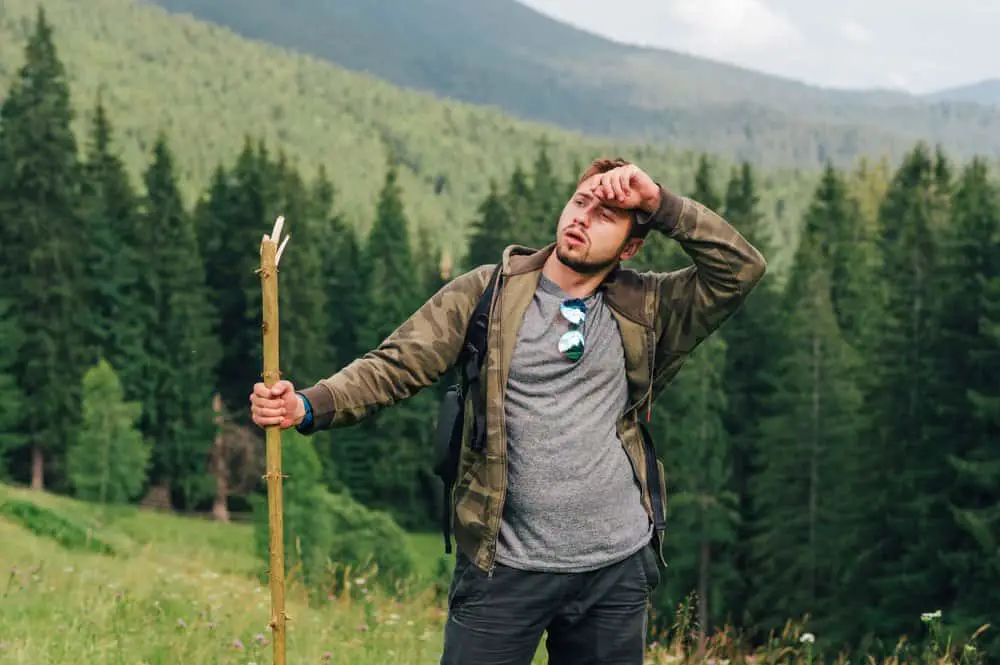
4. Not Bringing Enough Water
I can’t stress this enough. If you’re new to hiking and plan on doing a longer trail, plan on bringing more water than you think you’ll need. And then double it.
I severely underestimated how much water I’d end up drinking while out on the trails. Of course, there are a lot of factors, such as the difficulty, the weather conditions, what you’re wearing, etc. But a good rule of thumb is to bring 1 liter (32 ounces) of water for every 2 hours you plan on being out. And again, if you can, bring more than that. You really can’t have too much water when you’re hiking.
Another recommendation is to look into water filters or purifiers. What these are is essentially a way for you to drink water from just about any natural source, like a river or stream. Most trails won’t have water fountains or rest areas with easily accessible water, so it’s important to be prepared.
5. Not Eating Enough
This isn’t as important as water, but it still plays a pretty big part in how your hike will go. When you’re out on the trails, your body is burning a lot of calories. A one-hour hike can burn up to 500-600 calories, depending on difficulty. So it’s important to make sure you’re replenishing those lost calories with food.
A lot of people make the mistake of not eating enough because they think it’ll make them feel sluggish. But that’s actually not the case. Your body needs food for energy, and if you don’t have enough, that’s when you will feel sluggish. The key is to find the right balance of food that will give you the energy you need without weighing you down too much.
A good rule of thumb is to bring snacks that are high in protein and carbohydrates, like nuts, granola bars, trail mix, etc. And if you’re planning on being out for a while, it’s not a bad idea to pack a lunch as well.
6. Not Checking the Weather
This one should be obvious enough, right? But you’d be surprised how many people don’t bother checking the weather before they head out on a hike. And then they end up getting caught in a storm or being too hot or cold because they weren’t prepared. So always, always, ALWAYS check the weather conditions before setting out on your hike.
Another factor to consider – you’ll probably be on your trail longer than you expect. Just because a trail is only a mile long, doesn’t mean it’ll only take you 20 minutes to hike. There are a lot of factors that can affect your hiking speed, such as the terrain, how steep the incline is, etc. So make sure you give yourself enough time by checking the weather for the entire day and coming up with a realistic timeline.
7. Not Pacing Yourself
This was definitely a mistake I made when I first started hiking. I would go out too fast and then end up exhausted halfway through the hike. Personally, I have a tendency to sometimes dive headfirst into things and give it my all. But then I burn myself out. So on the trails, I would either have to turn back or push myself harder than I wanted to in order to make it to the end. And this actually led to another major issue – I ran out of water faster.
The key is to start out slow and then gradually increase your pace as you get warmed up. And if you start to feel tired, take a break. It’s better to finish the hike at a slower pace than it is to push yourself too hard and not be able to finish at all.
8. Not Being Aware of Your Surroundings
This is another common mistake that beginner hikers make. They get so focused on the trail ahead of them that they fail to pay attention to their surroundings. But it’s important to be aware of your surroundings, for a few reasons.
First, so you can enjoy the scenery and take in the beauty of nature. And second, so you can be aware of potential hazards, like wildlife or unsafe conditions.
There’s actually a third reason too. When I first started going on high elevation trails with steep declines and inclines, I had a tendency to look straight ahead because of nerves. I was afraid of falling if I looked down. So I would focus on the trail a few feet in front of me and nothing else.
That habit usually led to me tripping on loose rocks, losing my footing, and banging up my ankles pretty bad. Now, I always take the time to look around and scan the area before continuing on. It’s much safer and it allows me to really take in all the beauty around me.
9. Not Wearing Sunscreen
My wife always got on my case for this one. I used to go everywhere under the sun without sunscreen. I guess I thought I was invincible to the sun’s rays. But I was wrong.
Now, I always make sure to put sunscreen on before going outside, even if it’s just for a short period of time. And when we go hiking, I make sure to put on a good amount of sunscreen, since we’re usually outdoors for several hours at a time.
It’s especially important if you’re going to be hiking in an area without much shade. One of my favorite national parks, the White Sands National Monument – is an absolutely gorgeous place, but there is zero shade there.
10. Spending a Lot of Money on Hiking Gear that You Won’t Even Use
Now don’t get me wrong, some gear is essential for hiking. But as a beginner, you don’t need much, if at all.
One of the great things about hiking is that you can do it for free. All you need is a decent pair of shoes and some comfortable clothes. Sure, there are lots of cool gadgets and gizmos that you can buy. But they’re not necessary, especially when you’re just starting out. So save your money and don’t go overboard on gear. You can always buy more later on, as you start to hike more frequently and figure out what you really need.
I have a friend who used to do this. Got really into motorcycles one time, spent $2k on gear, got his motorcycle license, and never rode another bike again after his driving test. Don’t be like my friend. (He’s a great guy, though!)
Conclusion
Hiking is a great way to get out and enjoy nature. But before you hit the trails, there are a few things you should know, especially if you’re a beginner. In this article, we’ve gone over 8 common mistakes that beginner hikers make (and mistakes that I’ve definitely made.) So now you know what to watch out for on your next hike!
Good luck!

